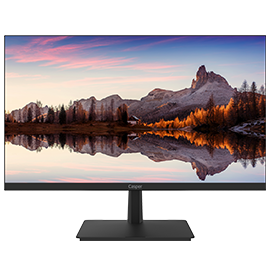I want to add 1920x1080 resolution but I get this error;
:~$ xrandr
Screen 0: minimum 8 x 8, current 1600 x 900, maximum 16384 x 16384
DVI-I-0 disconnected primary (normal left inverted right x axis y axis)
VGA-0 connected 1600x900+0+0 (normal left inverted right x axis y axis) 0mm x 0mm
1024x768 60.00 +
1600x900 59.82*
1400x900 59.88
1368x768 59.88 59.85
1280x800 59.91 59.81
1280x720 59.86 59.74
1024x576 59.90 59.82
960x540 59.82 59.63
864x486 59.92 59.57
800x600 72.19 60.32 56.25
800x450 59.82
700x450 59.88
684x384 59.88 59.85
640x480 59.94
640x400 59.98 59.88
640x360 59.86 59.83
512x384 60.00
512x288 60.00 59.92
480x270 59.82 59.63
432x243 59.92 59.57
400x300 72.19
320x240 60.05
DVI-I-1 disconnected (normal left inverted right x axis y axis)
HDMI-0 disconnected (normal left inverted right x axis y axis)
:~$ cvt 1920 1080 60
# 1920x1080 59.96 Hz (CVT 2.07M9) hsync: 67.16 kHz; pclk: 173.00 MHz
Modeline "1920x1080_60.00" 173.00 1920 2048 2248 2576 1080 1083 1088 1120 -hsync +vsync
:~$ xrandr --newmode "1920x1080_60.00" 173.00 1920 2048 2248 2576 1080 1083 1088 1120 -hsync +vsync
:~$ xrandr --addmode VGA-0 "1920x1080_60.00"
X Error of failed request: BadMatch (invalid parameter attributes)
Major opcode of failed request: 140 (RANDR)
Minor opcode of failed request: 18 (RRAddOutputMode)
Serial number of failed request: 29
Current serial number in output stream: 30
:~$ xrandr
Screen 0: minimum 8 x 8, current 1600 x 900, maximum 16384 x 16384
DVI-I-0 disconnected primary (normal left inverted right x axis y axis)
VGA-0 connected 1600x900+0+0 (normal left inverted right x axis y axis) 0mm x 0mm
1024x768 60.00 +
1600x900 59.82*
1400x900 59.88
1368x768 59.88 59.85
1280x800 59.91 59.81
1280x720 59.86 59.74
1024x576 59.90 59.82
960x540 59.82 59.63
864x486 59.92 59.57
800x600 72.19 60.32 56.25
800x450 59.82
700x450 59.88
684x384 59.88 59.85
640x480 59.94
640x400 59.98 59.88
640x360 59.86 59.83
512x384 60.00
512x288 60.00 59.92
480x270 59.82 59.63
432x243 59.92 59.57
400x300 72.19
320x240 60.05
DVI-I-1 disconnected (normal left inverted right x axis y axis)
HDMI-0 disconnected (normal left inverted right x axis y axis)
:~$ cvt 1920 1080 60
# 1920x1080 59.96 Hz (CVT 2.07M9) hsync: 67.16 kHz; pclk: 173.00 MHz
Modeline "1920x1080_60.00" 173.00 1920 2048 2248 2576 1080 1083 1088 1120 -hsync +vsync
:~$ xrandr --newmode "1920x1080_60.00" 173.00 1920 2048 2248 2576 1080 1083 1088 1120 -hsync +vsync
:~$ xrandr --addmode VGA-0 "1920x1080_60.00"
X Error of failed request: BadMatch (invalid parameter attributes)
Major opcode of failed request: 140 (RANDR)
Minor opcode of failed request: 18 (RRAddOutputMode)
Serial number of failed request: 29
Current serial number in output stream: 30


